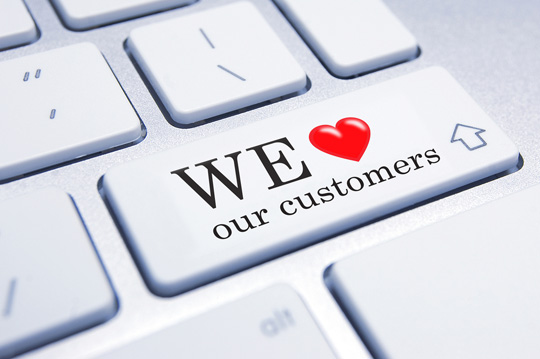Is customer service the new sales and marketing asks Enda Kenneally, VP of business development, West’s Unified Communications Services

Good customer service has always been important. Making life easier for your customers and creating satisfaction gives brands an edge over competitors and builds long-term loyalty and customer value. But in the 21st century, changing consumer behaviours means that meeting customer needs and building a two-way dialogue has a bigger impact than ever before on sales success.
Consumers are increasingly using the web to research, book or enquire about products and services. Mobile websites and apps are rapidly gaining popularity. Many customers are more comfortable using web chat than making a voice call. And of course, today’s consumer is quick to complain via social media if their experience is lacking.
All of this means that digital interaction is set to overtake voice in the contact centre and it also suggests that customer experience is set to overtake price and product as the key brand differentiator. The contact centre has a great opportunity to own the customer journey and provide the hub for customer contact across every channel; but this will only happen if there is a joined-up approach to customer service and customer experience across the organisation.
Poor customer service costs UK brands £234 billion

The report Converting Customer Experience into Revenue, highlights an increasing preference for dealing with businesses via the web; 62% of consumers research a future purchase online and an even higher 69% prefer to make a purchase online.
Shockingly, the research found that 92% of consumers have had a poor customer experience and one in three have acted on their frustration by abandoning a purchase because they couldn’t find the information they needed. It also confirmed that almost half (46%) of consumers have moved to a competitor because of poor customer service.
These are all issues that could be easily avoided by paying more attention to the user experience and adopting a joined-up strategy that provides a seamless and consistent experience across the web, online communication and the contact centre.
Removing roadblocks for a joined-up customer experience

According to new research commissioned by West, The State of Customer Experience 2017, 92% of contact centre leaders agree that customer experience can be linked to revenue, yet just 29 per cent could strongly agree that their contact centre can provide a seamless customer experience across multiple channels.
According to the report, the biggest obstacles to designing an exceptional customer experience revolve around flexibility, the ability to integrate and the costs linked to creating required architecture. The problem is that legacy systems just don’t meet the needs of an increasingly digitally-savvy and demanding customer base.
Digital interactions will overtake voice by 2020

Many organisations are finding that the Cloud offers the most cost effective, scalable and easy-to-deploy way to implement a successful and integrated multichannel strategy. By taking a hybrid approach in the short term, contact centrescan adopt cloud technologies at a pace that suits their organizational needs and budget.
By adopting priority elements first, it is possible to demonstrate the benefits of a successful deployment and build a business case for further investment. As customer behavior continues to evolve, it is vital to consider how to invest in technology that not only meets today’s needs, but will also meet your customers’ future communications preferences.
Ahead in the Cloud

enables a seamless two-way dialogue with customers via their preferred channel.
Those that have moved to the Cloud have confirmed that the top three benefits are speed of deployment, cost savings from flexible licensing models and a reduction in maintenance costs, side-by-side with access to a more advanced feature set, which typically includes the multichannel capability that legacy systems struggle to deliver.
There is a huge opportunity here for contact centres to improve their technology and start delivering value to the business to the best of their potential. There is absolutely no doubt that those who invest in the right technology today will have an advantage over their competitors tomorrow.
Additional Information
Enda Kenneally is VP of business development at West’s Unified Communications Services
For additional information on West visit their Website





